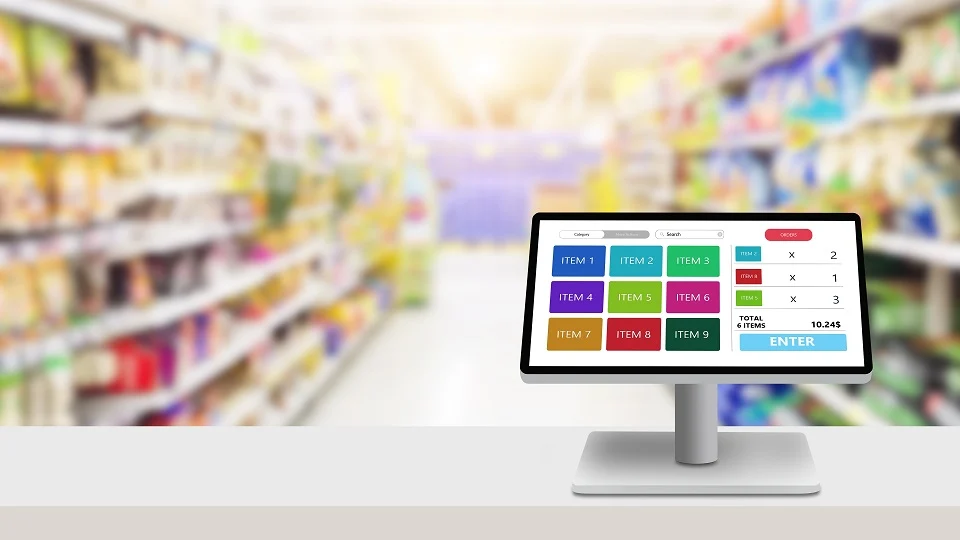
Fast, hassle-free merchant services with low rates, no commitments, and no application or termination fees.
About 20% of new companies fail before they have the chance to get off the ground. One of the main reasons why is that business owners can’t stay on top of their cash flow.
The best way to keep money coming through the door is to accept multiple payment options. That’s where the payment processing system comes into play.
These pieces of machinery allow companies to accept debit card, credit card, and ACH payments from consumers.
Depending on the type of system you invest in, you could also take inventory and perform other store functions on it. You only need to choose the right one. Continue reading to learn more.
The first thing to consider when choosing a payment processor is the type of transactions you want to be able to accept.
If you own a restaurant and want to process takeout orders over the phone, you’re going to need a payment processing system that will allow you to enter a customer’s card information manually.
To take in-person payments, your system will have to accept both chip and magnetic strip cards.
Some people either hate taking their wallet into the store with them, or they forget it altogether. In both scenarios, they’ll ask if they can pay with their mobile phone.
By offering various payment processing methods, you’ll improve your overall cash flow and attract more customers.
Payment systems come with transaction fees, chargeback fees, monthly fees, setup costs, membership fees, and cancelation charges. While you shouldn’t pour too much money into your payment processor, you should try to keep costs as low as possible.
The best way to do this is to consider what kind of business you are. For example, If you own a large furniture store that takes a great number of high transactions, you’ll want to pick the payment system that comes with the lowest transaction fees.
Keep in mind that frequent high transactions could make you a high-risk business. This will come with naturally expensive high-risk merchant payment processing fees.
Holding times refers to how long it will take for money to appear in your business account after you make a sale. Even if the customer’s payment processes right away, it could take a few days for you to see the money. This is to account for chargebacks and refunds.
You can opt for a payment processing system that will allow for same-day deposits, but it will cost extra. Be sure to factor this into your normal monthly payments.
Many people think that payment processing services and POS (point-of-sale) systems are the same thing, but they are two very different machines. POS systems let business owners manage their inventory, create sales reports, and record payments. Many of them even allow for accounting integration.
This being said, there are some payment gateway systems that also have POS capabilities. Opting for it will come with added fees.
In some cases, you can integrate your already existing POS hardware into your payment processing system. You’ll need to make sure the two are compatible before you proceed.
There is almost no coming back from a data breach. If your payment system allows a fraudulent payment to go through, it could be the end of your business.
That’s why it’s crucial that you choose a payment system that offers quality fraud protection. Find a payment processing service that flags and rejects risky transactions.
They should also encrypt data during the time of the transaction and also encrypt any data that’s stored in your system.
Some payment gateways set a limit on the number of transactions that your business is allowed to process every month. Once you hit that limit, that’s it. You can’t process anymore.
For small businesses, this isn’t too much of a problem. For larger companies, however, it could put a plug in their entire operation.
Tying yourself into a long-term contract with payment processing services should be avoided if you can help it. You want to be able to drop out of the service if you find it doesn’t fit your business model.
Most services charge on a month-to-month basis and don’t require businesses to sign a contract. If a business owner decides to no longer use the service, they can cancel their account with no repercussions.
Some services will allow for cancelations but charge a termination fee. You’ll need to find out where a service stands before you commit.
For some businesses, live 24/7 support may be overkill. For others, it’s a necessity.
If you run on extended business hours or take payments from everywhere around the globe, you’ll be glad to have the extra support in the event your system goes down. If your system glitches up and stops allowing you to accept payments at a big weekend event, you could lose out on a lot of revenue.
If you’re going to accept card and ACH payments, you’ll need to invest in a payment processing system for your business. Doing so will allow you to give customers multiple payment options, which is better for your overall cash flow.
Before choosing a system provider, you’ll need to look at their fraud protection options, customer support, holding times, and transaction limits.
While many companies tack on expensive credit card processing fees, you can rest easy knowing we don’t. That means you’ll get to keep all of your profits! Go here to complete your merchant request form!
 Long gone are the days when cash was the preferred form of payment. Around 33% of consumers use their credit cards to make a purchase. 38% of people opt to use their debit cards.
Long gone are the days when cash was the preferred form of payment. Around 33% of consumers use their credit cards to make a purchase. 38% of people opt to use their debit cards.
If you’re running an e-commerce business and accept credit/debit cards, you might’ve come across the term “high-risk merchant.” It can be intimidating if you discover that your company has been labeled as one. There are many reasons why a business selling a certain type of product might be considered a high-risk merchant.
This guide will discuss everything you need to know about high-risk merchants. We’ll also talk about what high-risk merchant accounts are and if your business needs one.
A high-risk merchant is a physical or online business that sells products that fall into specific categories. These types of companies have a higher likelihood of fraud or chargebacks. Online businesses can fall into this category because they can’t physically see their customer’s credit cards and verify their identity.
Some industries that fall into the high-risk category include:
Many characteristics might label a business as high-risk. In addition to the qualities we mentioned above, some other features include:
There isn’t a universal standard or set of rules when it comes to determining if a company is high-risk. Each payment processor and bank abides by its own set of standards.
High-risk merchant accounts are a type of bank account that’s set up by a payment processor. These accounts enable businesses to accept debit and credit cards even if they’re considered high-risk.
The money that gets collected during a transaction, minus processing fees, gets transferred to the business’s checking account. It typically takes 24 to 48 hours for the merchant to receive the funds.
High-risk merchant processing gives these companies the ability to accept debit and credit cards. If you fall into this category, you should explore payment processors that offer high-risk merchant services.
High-risk businesses have a higher likelihood of their application getting denied by banks or payment processors. However, some organizations have more relaxed standards when it comes to accepting businesses. They might also be more willing to work with you by enforcing additional measures low-risk businesses don’t experience.
Payment processors and banks have many ways they can reduce their risk when working with these types of companies. There are also big differences between regular and high-risk merchant accounts.
Some payment processing companies might charge around 0.3% for a standard business. That fee could be as high as 1.5% for a high-risk merchant. It’s important to understand their fees before you partner with a payment processor.
A payment processor or bank might ask for additional information when you apply for an account. They’ll want to use this data to look at your past finances. The bank might be analyzing your risk profile.
Other details they might want to review include:
Be as transparent as possible with the company. Show how much money you have moving through your business. Good cash flow can improve your approval chances.
Another thing to consider is that the payment processor might keep a reserve of a certain amount of cash for your business. Examples of this include:
You should get as many details about their cash reserve requirements before you sign a contract. You don’t want to have to provide a large amount of cash upfront if you’re not able to.
Some credit card processing companies might cap how many transactions you have. This is because they believe that they might encounter more risk if you have a high volume of transactions.
High-risk merchants might also have to pay chargeback fees when they process a refund. These fees may be higher to offset the risks the processor encounters with excessive chargebacks. These fees can range from $20 to even $100 each.
Don’t get discouraged if you’re considered a high-risk merchant. There are many things you can do to keep your business in good standing.
Many e-commerce businesses deal with a lot of chargebacks. This is especially true if you sell clothing or shoes.
Make sure your product description matches what you’re selling. Include a detailed size chart to ensure your customers purchase the right size. Reduce your chargebacks so you can lower the related fees.
Many banks and payment processors want to see that you have healthy cash levels. Having a high amount of cash on hand shows them that you’re financially stable. You’ll increase your chances of getting approved at a low fee rate.
As we mentioned earlier, being transparent is key. Give the payment processor all the documents and information they need during the application process. Doing so will show them that you’re a credible business that they’ll want to work with.
Being labeled as a high-risk merchant doesn’t have to be the kiss of death for your business. Being proactive and doing research will ensure you get approved by a reputable payment processing company. Look for payment processors that work with businesses like yours to ensure you receive tailored services.
First Financial works with high-risk merchants, providing them with financial and payment processing solutions. Should you need help applying for a loan or other banking matter, we’re here to assist. Contact us to learn more about our services.
First Financial® | Corporate Headquarters | Mailing Address: First Financial 8880 Rio San Diego Dr. 8th Floor #2011 San Diego, CA 92108
Client Service Center: Main: 1-800-315-7791 Fax: 1-800-215-0217
First Financial® & First Financial Online® are Federally Registered Trademarks
©1996-2024 First Financial®, All Rights Reserved. All other products and company names are trademarks of their respective companies. First Financial® does not provide any investment, financial, tax, legal or other professional advice. We recommend that you consult with financial and tax advisors to understand the risks and consequences of buying, selling and holding Bitcoin.*Not all lenders can provide up to $5,000.